Space Exploration Advances and Challenges in 2021


Overview of Research Topic
Brief Background and Context
Space exploration has seen significant momentum over the past two decades. The year 2021 marked important milestones in this journey, driven by advancements in technology, funding from both public and private sectors, and international collaborations. Traditional space agencies like NASA and ESA continued their vital missions while private companies, exemplified by SpaceX and Blue Origin, expanded their roles in entering the cosmos. Public interest in space missions grew as well, fueled by high-profile achievements and the search for extraterrestrial life.
Importance in Current Scientific Landscape
The relevance of space exploration extends beyond mere fascination. Today, it intertwines with critical scientific inquiries regarding climate change, potential resource mining on asteroids, and the future of humanity beyond Earth. Additionally, understanding the universe's origins and the conditions on other celestial bodies holds significant implications for our knowledge of life itself. The challenges and successes of 2021 shed light on how space agencies will navigate the complexities of exploration in the coming years.
Methodology
Research Design and Approach
This article follows a qualitative research approach, synthesizing data from various sources including official reports, academic journals, and technology analyses. The aim is to provide a thorough understanding of space exploration developments in 2021, emphasizing both achievements and obstacles faced by pivotal stakeholders.
Data Collection Techniques
Data collection involved a comprehensive review of literature, online databases, and interviews with industry experts. Relevant information was collated from reputable sources such as NASA, the European Space Agency, scientific community forums, and prominent news outlets. By triangulating these perspectives, the review endeavors to present an accurate portrayal of the advancements and challenges in space exploration within the specified timeframe.
"Space exploration is a key component of humanity's quest for knowledge and understanding beyond our Earthly confines."
The analysis highlights essential missions, technological innovations, and collaborative efforts that characterized 2021, suggesting pathways for future exploration endeavors.
Overview of Space Exploration in
Space exploration in 2021 represented a pivotal year, full of advancements and challenges. It was a year characterized by remarkable missions and technological progress, underscoring the ever-evolving landscape of space science. Understanding the nuances of this year’s developments is crucial for grasping ongoing trends and future directions in space research.
Developments in 2021 set a new stage for collaboration among nations and private sectors, which expanded the horizon for scientific discovery. The key focus areas included a mix of innovation, scientific findings, and ethical debates about the implications of human activities beyond Earth. Notably, the trends indicate a growing involvement of commercial entities, seeking not only to profit but also to contribute to humanity's aspiration of exploring deeper into space.
Historical Context
The historical backdrop of space exploration is a testament to humanity's quest for knowledge. Since the dawn of the space age in the late 1950s, each decade has brought significant milestones. The launch of Sputnik by the Soviet Union in 1957 marked the beginning, leading to the Apollo moon landings of the 1960s. Since then, exploration expanded from Earth’s orbit to Mars and beyond.
In 2021, this historical context informed current missions, such as those targeting Mars. The ongoing study of astrobiology and planetary science reflects decades of inquiry shaped by previous successes and setbacks in exploration. The lessons learned from earlier missions fuel ongoing projects, rendering them a cumulative effort across history. This interaction between past experiences and present pursuits is vital to our understanding of space exploration today.
Key Achievements
2021 was marked by numerous key achievements that showcased the technological and scientific prowess of various space agencies.
- NASA's Mars Perseverance Rover: One of the crown jewels of this year’s missions was NASA’s Perseverance rover, which landed on Mars in February. This mission aimed to search for signs of ancient life and collect samples for potential return in future missions. The rover's ability to capture detailed geological data advanced our understanding of the Martian surface.
- James Webb Space Telescope Launch: Anticipation built around the upcoming launch of the James Webb Space Telescope. Hailed as the successor to the Hubble Space Telescope, it promises to open a new chapter in astronomical discoveries. Its deployment is crucial for understanding the formation of stars, galaxies, and planetary systems.
- International Collaborations: Achievements were not confined to a single nation. The European Space Agency and other global partners engaged in significant collaborations, enhancing the reach and scope of missions. Such partnerships enriched the scientific community and advanced collective knowledge about space.
In summary, 2021 was notable for its historical ties and significant advancements, setting a foundation for future exploration that continues to drive our quest for knowledge beyond our planet.
Major Space Agencies and Their Missions
The significance of examining major space agencies and their missions in 2021 cannot be overstated. These organizations play crucial roles in advancing our understanding of outer space, driving technological progress, and fostering international collaboration. Their initiatives conduct valuable research that benefits humanity, from deciphering the cosmic elements and origins to facilitating upcoming explorations beyond Earth. Each agency brings its unique focus and expertise, thereby contributing to a more comprehensive understanding of the universe.
NASA’s Key Missions
Artemis Program Overview
The Artemis Program aims to return humans to the Moon by the mid-2020s. This mission is important because it prepares for future crewed missions to Mars and establishes a sustainable human presence on our natural satellite. The program’s key characteristic is its ambitious goal to ultimately send the first woman and the next man to the lunar surface. This is a beneficial choice for this article because it emphasizes not only technological progress but also social equity. A notable feature of the Artemis program is the planned Lunar Gateway, which will serve as a staging point for further space exploration missions. However, critics argue that budget constraints may hinder its ambitious timelines.
Perseverance Rover on Mars
The Perseverance Rover, landing on Mars in February 2021, has already made history by collecting soil samples and testing technologies for future human expeditions. Its contribution to Mars exploration is significant as it gathers data that can inform scientists about the planet's past habitability. The rover's key characteristic is its advanced suite of scientific instruments designed for astrobiology and geology, making it a popular choice for this article. Unique features include its ability to produce oxygen from carbon dioxide in Mars' atmosphere. While the rover brings invaluable discoveries and insights, its mission also faces challenges such as harsh conditions and technical malfunctions.
James Webb Space Telescope
The James Webb Space Telescope is set to be the premier observatory for the next decade. Its primary mission is to examine the universe's history, encompassing the formation of stars and galaxies, as well as the search for exoplanets. This project stands out due to its cutting-edge technology, offering deeper insights into the cosmos than ever before. Highlighting the capabilities of the James Webb Space Telescope makes it a significant aspect of this article. A unique feature is its deployment beyond Earth's orbit, which minimizes atmospheric interference, enhancing observation quality. However, the telescope has faced delays and budget overruns, raising concerns about the sustainability of such large projects.
European Space Agency Initiatives
JUICE Mission to Jupiter's Moons
The Jupiter Icy Moons Explorer, or JUICE, is set to launch in 2022, targeting intriguing moons such as Ganymede, Callisto, and Europa. This mission is relevant to understanding our solar system's formation and the potential for life beyond Earth. Its key characteristic is a commitment to studying the ice-covered water oceans of these moons. This makes JUICE a beneficial choice for this article, as its findings may provide insights into the habitability of extraterrestrial environments. A unique feature is its lengthy mission duration, aiming for comprehensive exploration, though the complexity of its objectives presents challenges in execution.
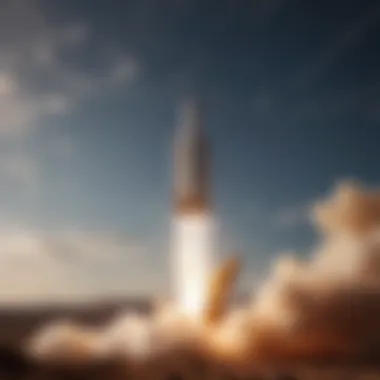

ExoMars Rover
The ExoMars Rover aims to explore Mars, searching for signs of past life and collecting samples to understand the planet better. This mission is both ambitious and crucial for planetary science as it closely collaborates with NASA's Mars initiatives. Its key characteristic involves an innovative drill that can extract samples from beneath the Martian surface. The ExoMars Rover's focus on astrobiology makes it a significant topic in this article. A unique aspect is its international collaboration which broadens expertise, though differing priorities between partners can complicate efforts.
Collaborations with NASA
Collaborations between the European Space Agency and NASA have yielded successful missions that leverage each agency's strengths. This partnership enhances mission efficiency and effectiveness across various projects. Its key characteristic is the synergy created by combining resources and knowledge sharing, making it a beneficial focal point for this article. Unique features of these collaborations include shared spacecraft builds and cross-support missions, which deepen scientific analysis. However, navigating differing bureaucratic structures can pose hurdles in project execution.
Other Notable Agencies
Russian Space Activities
Russia's space activities in 2021 focused on maintaining its reputation as a pioneer in space. The agency continues to operate the long-standing Soyuz program, providing crucial transportation for astronauts to the International Space Station. Its key characteristic is resilience in face of changing global dynamics, making it a relevant agency in this article. The unique aspect of Russia's programs is a combination of traditional and modern technologies, yet ongoing geopolitical tensions may impact future collaborations and missions.
Chinese Lunar Missions
China's space program has seen significant advancements, particularly with its successful Chang'e missions to the Moon. These initiatives aim to explore lunar resources and employ robotic technologies for scientific advancements. The key characteristic of these missions is their rapid development and execution. This reflection of national priorities makes it a relevant selection for this article. One unique feature is China's strategy of lander-return sample missions, contributing to the global knowledge base despite criticisms on transparency and data sharing models.
Indian Space Research Developments
India's space endeavors marked continued growth, with the Indian Space Research Organisation undertaking numerous successful launches in 2021. Significant missions include the Mars Orbiter Mission, which demonstrated India's capability to reach interplanetary destinations. Its key characteristic is cost-effectiveness, making it an interesting case for this article. Unique features of India's programs include innovations tailored to economic viability, which provide insights into prioritizing efficient space exploration, albeit with criticisms regarding long-term sustainability of funding.
Role of Private Sector in Space Exploration
The involvement of the private sector in space exploration has gained prominence in recent years. This shift has transformed the landscape of access to space, impacting how missions are planned and executed. Traditional space agencies often faced budget constraints and bureaucratic hurdles, limiting the pace of innovation. In contrast, private companies bring agility, fresh investment, and a competitive spirit. Their participation in various aspects of space exploration has increased efficiency and has potential to expand human presence beyond Earth.
Commercial Launch Services
SpaceX's Starship
SpaceX's Starship represents a bold step towards reusable space travel. This spacecraft aims to demonstrate high-capacity transport for cargo and human missions. The key characteristic of Starship is its full reusability, which is crucial for reducing costs associated with launches. This feature makes Starship appealing for repeated missions, whether to the Moon, Mars, or beyond.
Starship's unique capacity to carry large payloads makes it a valuable option for various missions. It's worth noting that its development has faced challenges, including testing failures. However, the advantages of reusability and the capability to support long-duration missions position Starship as a vital component of future human exploration endeavors.
Blue Origin's New Shepard
Blue Origin's New Shepard focuses on suborbital flights, targeting mainly the space tourism market. The key characteristic of New Shepard is its vertical landing capability, enabling straightforward reusability after each flight. This allows for multiple launches without extensive refurbishment, making it a cost-effective choice for short-duration flights.
The unique aspect of New Shepard lies in its flight profile, providing brief experiences of weightlessness and stunning views of Earth. This has made New Shepard popular among thrill-seekers. However, this limitation to suborbital missions restricts its use for deeper space exploration.
Innovations in Satellite Technology
Small Satellite Revolution
The small satellite revolution has redefined how space missions are conducted. These smaller satellites, often referred to as CubeSats or nanosatellites, offer significant advantages. Their reduced size and cost allow for more frequent and diverse missions. They enable innovative applications in earth observation, communication, and scientific research.
Small satellites are manageable in terms of both launch and operational costs. This capability is increasingly attractive for academic and commercial purposes. However, the challenge remains in coordinating large constellations of small satellites and ensuring effective data communication.
Internet from Space Initiatives
Internet from space initiatives aims to bridge connectivity gaps around the world. With global internet access being limited in many areas, companies like SpaceX and OneWeb are launching constellations of satellites to provide broadband services. This approach has the potential to transform internet accessibility, bringing connectivity to remote regions.
The unique feature of this initiative is its capacity to deliver high-speed internet globally. The advantages are significant, but challenges arise with bandwidth management and latency issues in certain applications. Furthermore, regulatory concerns about frequency management are present.
Public-Private Partnerships
NASA's Commercial Crew Program
NASA's Commercial Crew Program exemplifies a successful collaboration between public and private sectors. This initiative aims to transport astronauts to and from the International Space Station. By leveraging private companies like SpaceX and Boeing, NASA can focus on deep space exploration while ensuring safe and reliable access to low Earth orbit.
The key characteristic of this program is its cost-effective approach. Instead of developing new spacecraft entirely, NASA invests in existing private technologies. This method shortens timelines and reduces taxpayer burden. The unique element is the shared responsibility for human safety, aligning both NASA’s regulatory oversight with private sector innovation, providing significant benefits and robust safety standards.
International Space Station Collaborations
International Space Station collaborations demonstrate the synergy of public and private entities in advancing research. Multiple space agencies and private companies engage in research projects onboard the station, leading to technological advancements and scientific discoveries. The key aspect of these collaborations is their diverse expertise. This collaboration shares the burden of costs and enhances the pool of knowledge.
Unique to these partnerships is the blend of governmental and commercial resources. Benefits include shared access to advanced technology and research findings. However, coordination among various stakeholders can introduce complexities. Despite these challenges, the continued cooperation between public and private sectors remains crucial for future endeavors.
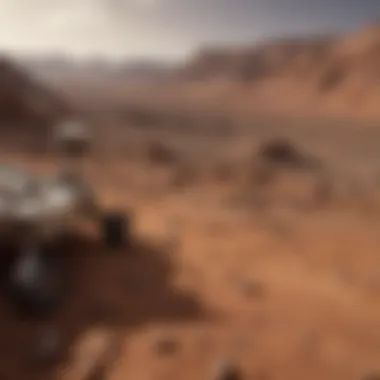
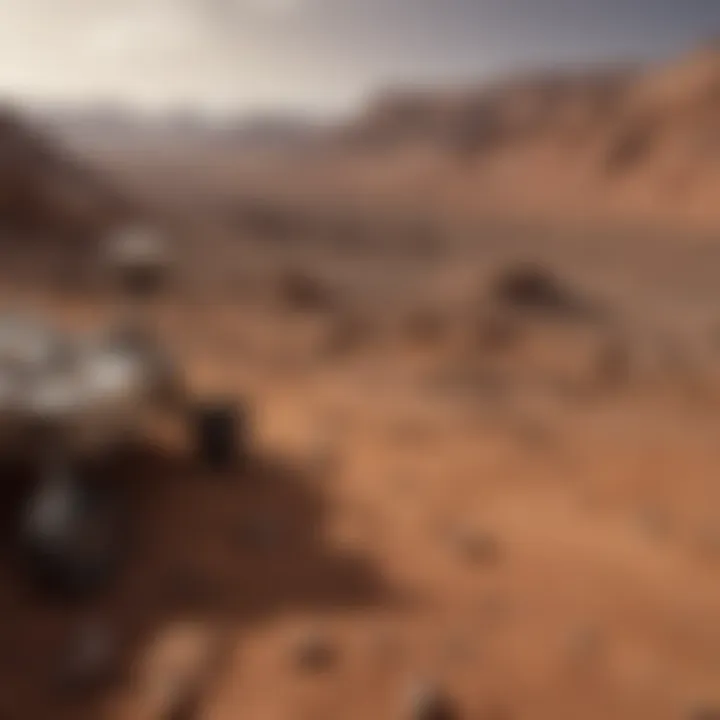
Scientific Discoveries and Technological Advances
The section on Scientific Discoveries and Technological Advances is crucial for understanding how space exploration has evolved in 2021. It covers the breakthroughs that have reshaped our knowledge of the universe and improved our capabilities in exploring it. The significance of these advances cannot be overstated, as they affect scientific research, inform policy decisions, and inspire future missions.
Planetary Science Insights
Findings from Mars Missions
Mars missions, particularly those by NASA's Perseverance rover, have provided invaluable insights into the planet's geology and climate. These missions have focused on studying the surface, searching for past life, and determining potential resources for future human exploration. The key characteristic of findings from Mars missions is their ability to deliver high-resolution data about its atmosphere and surface conditions. This data is beneficial because it offers concrete evidence that can inform future human missions to Mars.
One unique feature of these findings is their interdisciplinary nature, merging geochemistry, astrobiology, and meteorology. This holistic approach can either be advantageous since it creates a broader understanding of the Martian environment or disadvantageous due to the complexity of interpreting results from multiple scientific fields.
Studies of Asteroids and Comets
Studies of asteroids and comets have gained traction in 2021, primarily due to missions like Japan's Hayabusa2 and the ongoing OSIRIS-REx mission by NASA. These missions focus on sample collection and analysis, which could unveil the building blocks of our solar system and even clues about the origins of life on Earth. Their key characteristic is the potential to provide materials that are billions of years old, preserved from significant alteration.
A unique feature of these studies is their potential for mining resources, which could have implications for future space economies. This can be beneficial as it opens new possibilities for space resource utilization but poses challenges regarding ethical extraction and planetary protection.
Astronomical Discoveries
Exoplanet Research
Exoplanet research has accelerated with the advent of sophisticated telescopes and detection techniques. Studies have revealed thousands of exoplanets, prompting questions about their atmospheres, compositions, and potential habitability. The key characteristic of exoplanet research is its ability to expand our understanding of how planetary systems form and evolve beyond our solar system.
This aspect is beneficial for the overall goal of space exploration, as identifying Earth-like planets could guide future missions aimed at searching for extraterrestrial life. However, the unique feature of this research is its reliance on indirect measurement methods, which sometimes lead to uncertainties in data interpretation.
Galactic Observations
Galactic observations have revealed new insights into the structure and dynamics of our Milky Way, as well as neighboring galaxies. These observations often utilize data from the Hubble Space Telescope and ground-based observatories, focusing on stellar formation and movement within galaxies. The key characteristic here is the advancement in imaging and data collection techniques, which allows astronomers to gather detailed attributes of celestial bodies.
The unique feature of these observations is their contribution to understanding dark matter and cosmic evolution, providing frameworks for testing theories of the universe's fate. The advantage lies in a more profound comprehension of galactic behaviors, though it also comes with the challenge of making sense of complex data.
Technological Breakthroughs
Advancements in Rocket Propulsion
2021 has seen notable advancements in rocket propulsion technology, which have implications for cost efficiency and mission capabilities. Developments in reusable rocket technology, such as those pioneered by SpaceX, allow for multiple launches at a significantly reduced cost. The key characteristic of these advancements is their focus on sustainability and the reduction of space debris.
These advancements serve the goal of making space travel more accessible. The unique feature is the technical challenges involved in re-entering and landing rockets safely, which can either result in successful missions or catastrophic failures.
Robotics in Space Exploration
Robotics play a vital role in space exploration, from rovers like Perseverance to robotic arms on the International Space Station. These technologies allow for operations in hostile environments where human presence is impractical. The key characteristic of robotics in space exploration is their precision and ability to perform complex tasks remotely.
This aspect contributes significantly to the overall aim of conducting extensive studies in space. A unique feature of this technology is its potential for automating tasks, which can have both advantages, such as increased safety and efficiency, and disadvantages, including the high costs associated with designing and building advanced robotic systems.
Challenges in Space Exploration
The exploration of space presents myriad challenges that directly impact the efficacy and success of missions. Understanding these challenges is vital for both current operations and future planning. It is not just about overcoming the technical hurdles, but also understanding the socio-environmental implications of space endeavors. This discourse navigates through key elements such as financial limits, environmental concerns, and ethical discussions. Each aspect is crucial for ensuring not only a successful exploration of the cosmos but also the sustainability of our own planet and the respect for potential extraterrestrial life.
Budget Constraints
One of the most pressing issues in space exploration is budget constraints. This is a major concern for space agencies globally. Limited financial resources often dictate the scope and ambition of missions. Agencies like NASA face the pressure to prioritize projects within a strict budget. As public funding ebbs and flows, program stability can be challenging.
The importance of budgeting cannot be overstated. It determines what types of missions can proceed, the technologies that can be developed, and how many collaborations can be pursued. Budget cuts can slow research, delay launches, and lead to a loss of skilled personnel. Agencies must often navigate political landscapes to secure necessary funding, which may not always align with scientific priorities.
Environmental Considerations
The environmental impact of space exploration is garnering increasing attention. As missions become more frequent, two specific aspects emerge as critical: space debris management and planetary protection protocols.
Space Debris Management
Space debris is a growing concern for future missions. As more satellites are launched, the risk of collisions increases. Managing this debris is essential for safeguarding both current operations and future expeditions. The key characteristic of space debris management is its focus on sustainable practices in space. Improving tracking systems and creating regulations for satellite decommissioning are vital steps.
The unique feature of this management effort lies in its proactive approach to prevent creating additional debris and ensuring that space remains accessible. However, the challenges include the technologies required for debris removal and the financial investments needed to implement them effectively.
Planetary Protection Protocols
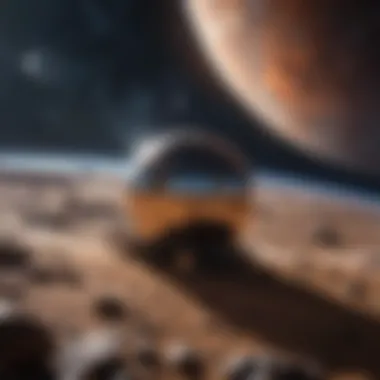
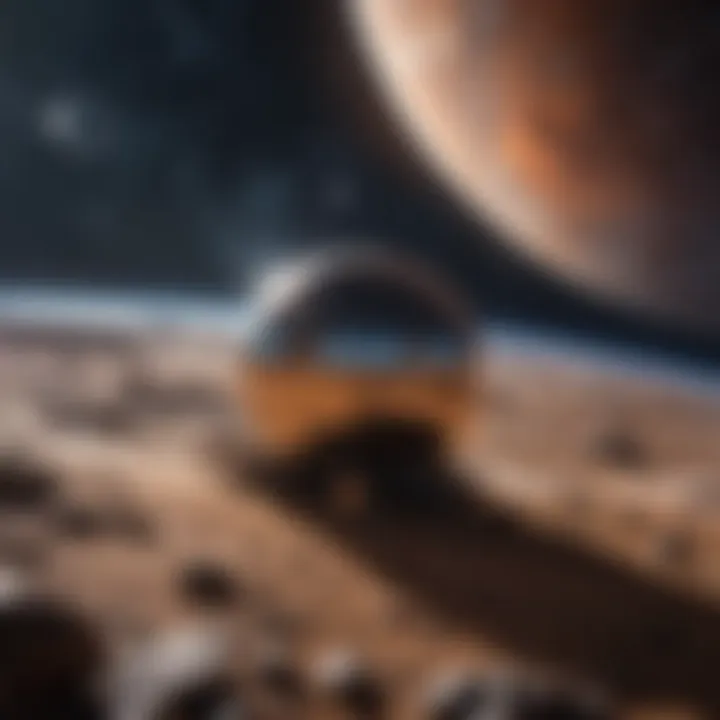
Planetary protection protocols serve as guidelines to prevent biological contamination of other celestial bodies. This is essential in preserving the integrity of potential ecosystems and ensuring that we do not unintentionally contaminate extraterrestrial environments. The core aspect of these protocols is to maintain the highest scientific standards during exploration.
This feature stands critical for missions aimed at Mars or Europa, where life might exist. However, some scientists debate the strictness of these protocols, arguing they can hinder exploratory ambitions. Balancing exploration with ethical considerations remains a contentious issue in the scientific community.
Public Perception and Ethical Debates
Public perception shapes the narrative around space exploration, often intertwining with ethical considerations. Key discussions revolve around human spaceflight and its implications.
Human Spaceflight Ethics
Human spaceflight raises numerous ethical questions. This includes debates on the safety of astronauts, the high costs associated with manned missions, and the morality of potential planetary colonization. The attraction of human involvement in space exploration is not just about science; it’s about the human experience. However, the risks involved often provoke public concern and calls for stringent safety measures.
The significant characteristic of human spaceflight ethics is its commitment to prioritizing human life and welfare in space missions. While it encourages innovation and exploration, adherence to these ethical standards can impede ambitious projects where risks are inherent yet overseen.
Impacts on Earth
Finally, the impacts of space exploration extend back to Earth. This includes discussions on resource allocation and environmental costs. The key characteristic here is the relationship between exploration and resolving earthly challenges, such as climate change.
These impacts will inform the direction of future policies and may influence public sentiment towards funding and support for space initiatives. The unique feature is that while space exploration can provide new technologies to solve issues on Earth, it also raises moral questions about the benefits we prioritize for humanity.
Future Prospects in Space Exploration
Understanding the future of space exploration is essential for grasping where humanity stands in its quest to understand the universe. The next stages of exploration present vast possibilities for scientific discovery, technology advancements, and deeper international collaboration. This exploration aims to expand our knowledge of celestial bodies, develop sustainable practices in space, and harness planetary resources.
Upcoming Missions
NASA's Artemis Moon Missions
The Artemis program represents a bold step for NASA in returning humans to the Moon. With an ambitious schedule, Artemis aims to land the first woman and the next man on the lunar surface by the mid-2020s. This mission is crucial for establish a sustainable human presence on the Moon, seen as a stepping stone for future Mars missions. The key characteristic of the Artemis program is its focus on inclusivity and sustainability. The unique feature includes the Gateway, a lunar orbiting outpost that will enable longer stays on the Moon and facilitate deep space exploration.
The benefits of this program are manifold. It offers the possibility of scientific research in environments that have remained untouched, while also pushing technological advancements necessary for safe human travel. However, challenges exist, especially regarding budget and timeline commitments.
Commercial Lunar Landings
Commercial lunar landings signify a shift towards private sector involvement in space exploration. Various private companies are developing landers to deliver payloads to the Moon’s surface. This is significant because it allows NASA to focus its resources on deeper exploration. Notably, companies like SpaceX and Blue Origin are active participants in this arena, aiming to create a commercial economy in space.
The primary advantage of commercial landings is cost-efficiency. By leveraging private innovations and partnerships, missions can be executed at lower costs. However, relying on commercial entities raises questions about regulation and safety standards. The unique feature of these landings is their potential to stimulate a broader market for lunar exploration and resource utilization.
Long-term Goals
Manned Mars Exploration
Manned Mars exploration is one of the significant long-term goals for both governmental and private space agencies. This contributes to understanding whether human life can be sustained on another planet. The prospect of sending humans to Mars captures public imagination and scientific ambition alike. The primary characteristic of this mission is its complexity. Manned missions require unprecedented levels of planning, technology, and international collaboration.
The unique feature of Manned Mars exploration is the technology required for life support systems beyond Earth. These have potential benefits for Earth applications, including advancements in recycling and sustainable technologies. However, the health implications for astronauts during long-duration space travel pose serious challenges.
Interstellar Missions Plans
Interstellar missions remain largely theoretical at present, yet they represent the ultimate goal of human exploration. These plans focus on traveling beyond our solar system to explore other star systems. The primary characteristic of such initiatives is their speculative nature. Current discussions revolve around missions like the Breakthrough Starshot, which proposes using light sails propelled by powerful ground-based lasers.
The unique feature of Interstellar Missions is the use of advanced propulsion systems and exploration technologies. While the knowledge gained from interstellar exploration could be profound, the enormous time frames involved and the significant technological barriers present disadvantages. The benefits, however, could be immeasurable in expanding human knowledge about the universe.
Exploring the future of space means understanding the vast potential it holds for human survival, knowledge, and innovation.
Closure
The conclusion of this article serves as a vital touchstone, encapsulating the myriad developments and challenges posed within the realm of space exploration in 2021. Understanding these elements is essential for comprehending the dynamics that shape current space initiatives and future prospects. Beyond merely summarizing the key points, this section emphasizes the interconnectedness of various factors impacting space exploration and the importance of collaborative efforts in overcoming obstacles.
Summary of Key Points
In reviewing the landscape of space exploration in 2021, several key insights emerge:
- The continuous strides made by agencies such as NASA and the European Space Agency illustrate a robust commitment to exploring beyond Earth.
- The emergence and involvement of private companies like SpaceX and Blue Origin signify a shift in how space missions are planned and executed.
- Scientific discoveries from Mars missions, astronomical advancements, and innovations in technology highlight the expanding frontiers of human knowledge.
- Challengers such as budget constraints, environmental considerations related to space debris, and ethical dilemmas concerning human presence in outer space remain ever-present obstacles.
- The prospects for future missions, particularly aimed at Mars and beyond, promise exciting developments yet necessitate careful planning and international cooperation.
This summary synthesizes the critical themes discussed, reinforcing their significance in a broader context of space exploration policy and research.
The Way Forward
Looking ahead, space exploration is poised for further evolution as nations and private entities pursue ambitious goals. The path forward will involve:
- Strengthening International Collaborations: Building partnerships among various space agencies and private companies will enhance resource sharing and knowledge dissemination. Importantly, these collaborations can lead to more sustainable and ethical practices in space exploration.
- Fostering Technological Innovations: Continuing to invest in research and development will drive breakthroughs in spacecraft technologies, targeting issues like propulsion efficiencies and life support systems essential for long-term missions.
- Addressing Environmental Concerns: Formulating comprehensive policies to manage space debris and safeguard planetary bodies will be crucial in maintaining not only the success of space missions but also the ethical considerations of human exploration.
- Public Engagement and Education: Ensuring that the general public understands the importance and complexities of space exploration will foster support and inform policy decisions.
As we proceed into 2022 and beyond, the trajectory of space exploration holds unparalleled potential. With carefully coordinated efforts and inclusive strategies, the pursuit of knowledge and exploration can continue to thrive, pushing the boundaries of what humanity can achieve.



